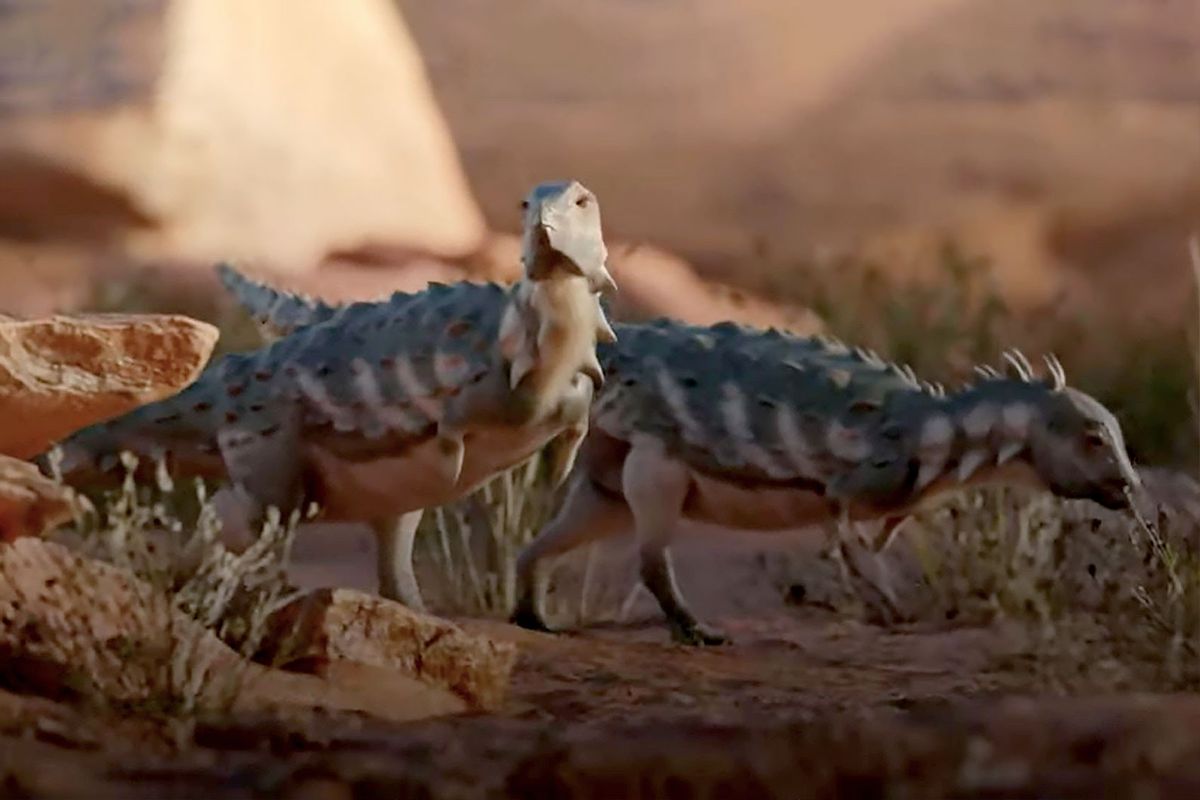Paleontologists have discovered what they say is a new species of the ankylosaurid dinosaur genus Tarchia that lived during the Upper Cretaceous epoch in what is now Mongolia.
Map showing the locality where Tarchia tumanovae was discovered: (a) map of Mongolia; (b) enlarged map of the dotted lined rectangle of A marked with the fossil locality; (c) photo of the excavation site; (d) quarry map showing bone location; (e-f) skeletal diagram of the specimen in dorsal (e) and left lateral (f) views (white bones represent recovered elements); (g) skeletal reconstruction with dermal armor. Abbreviations: 7os – Type 7 osteoderm; csr – caudosacral vertebra; dr – dorsal rib; dsr – dorsosacral vertebra; il – ilium; maj os – major osteoderm; ot – ossified tendon; sk – skull. Image credit: Park et al., doi: 10.1038/s41598-021-02273-4.
The new dinosaur species roamed our planet some 72 million years ago (Upper Cretaceous epoch).
Dubbed Tarchia tumanovae, the ancient creature had a unique set of characters, including a shovel-shaped beak.
It was a member of Ankylosauridae, a family of armored dinosaurs within the group Ankylosauria.
“Ankylosaurid dinosaurs are quadrupedal, herbivorous, and have a heavily ornamented skull and parasagittal rows of osteoderms covering the dorsolateral surfaces of the body,” said Seoul National University paleontologist Yuong-Nam Lee and colleagues.
“Their fossils have been frequently discovered from the Upper Cretaceous (upper Campanian-lower Maastrichtian) Nemegt Formation of Mongolia.”
“Except for the holotype of Tarchia teresae, previously known specimens from this rock unit consist of only postcranial material, mostly caudal elements.”
The fossilized cranial and postcranial remains of Tarchia tumanovae were collected in 2008 from the Nemegt Formation in southern Gobi Desert, Mongolia.
“The specimen included a well-preserved skull, dorsal, sacral, caudal vertebrae, sixteen dorsal ribs, ilia, a partial ischium, free osteoderms, and a tail club,” Dr. Lee and co-authors said.
The individual also had a poorly healed ossified tendon on its tail knob handle, which is a possible injury due to active tail use during combat.
“Localized pathologies on the dorsosacral ribs and the tail provide evidence of agonistic behavior,” the authors said.
“The tail club knob asymmetry of Tarchia tumanovae resulted from restricted bone growth due to tail club strikes.”
“Furthermore, the species had an anteriorly protruded shovel-shaped beak, which is a morphological character of selective feeders,” they added.
“Ankylosaurid diets shifted from low-level bulk feeding to selective feeding during the Baruungoyot and the Nemegt ‘age’ (middle Campanian-lower Maastrichtian).”
“This ankylosaurid niche shifting might have been a response to habitat change and competition with other bulk-feeding herbivores.”
Source: sci.news













